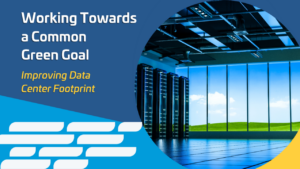Originally posted on LinkedIn by Kelvin Fong, EdgeConneX Managing Director, Asia-Pacific.
Asia is well on its way to becoming the world’s largest data center region over the next decade, with growth outpacing the rest of the world amid rapid digitalization of its economies. Southeast Asia’s digital economy is expected to be worth US$360 billion by 2025 – and it will depend on data centers located within the region to meet this growth.
With a steady stream of new hyperscale developments across Asia, large energy consumption is a concern although the rapid growth in data traffic need not necessarily result in an increase in energy utilization.

In fact, efficiencies introduced into servers, power supplies, cooling and networking has managed to offset higher processing rates, storage and traffic. Between 2010 and 2018, data center capacity increased by 600%, internet traffic grew by orders of magnitude, and storage capacity increased by 25 times. But data center energy use only grew by 6% over the same period, pointing to the value of ensuring that more data centers embark on a sustainable path.
Hyperscale customers now demand that data center operators meet sustainability standards. For instance, we see customers asking for certifications and examples of sustainability measures EdgeConneX implements in the various locations where we operate. Efficient data centers are not just necessary in itself, but it also enables other industries to meet the sustainability criteria that supports their own ESG targets.
Likewise, governments are also taking proactive steps to ensure that the environmental impact of data centers is limited. In March this year, Singapore lifted its two-year moratorium on the development of data centers in the country with an understanding that sustainability is a key consideration when seeking government permission to build data centers. Data centers use about 7% of Singapore’s total electricity consumption, and with the country emerging as a top data center hub, not just regionally but also globally, data center facilities needed to become more sustainable.
EdgeConneX has made it a top priority to focus on taking concrete steps to improve our data center footprint and deploy more creative universal and market-specific solutions to our facilities. A few examples include:
· Renewable Energy Credits (REC): Beginning in 2019, we acquired Green-e RECs for our facilities, and today we are carbon-neutral across North America and have initiated carbon-free supply contracts for a growing number of our locations.
· Creative solutions in energy-constrained areas: To help minimize our impact on communities already struggling with energy generation we have worked with local municipalities and regulators as well as leading energy companies, to design and develop custom, eco-friendly solutions for generating electricity that requires no supply from the local grid.
· In one of our major data center campuses, we have installed advanced filtration systems that allow EdgeConneX to reduce our water usage by 25% and at the same time eliminate the need for chemical or biocide treatments, allowing us to reduce any impact on the local water supply.
More certainly can and needs to be done within the industry, although one challenge lies in the lack of a universal definition of what sustainability in data centers ought to look like.
At EdgeConneX, we use the UN Sustainable Development Goals (UN SDG) as a benchmark. One benefit of doing so is that it creates a common basis for reporting, allowing EdgeConneX to audit and report on our sustainability metrics and goals that can also be easily referenced by our customers and partners.
We are also proud to be a founding member of the Infrastructure Masons (iMasons) Climate Accord (ICA) launched earlier this year, where data center providers, hyperscalers and other service providers have pledged to reduce carbon footprint within digital infrastructures.
There are many ways to make data centers greener and more efficient, whether in terms of planning or designing new facilities or optimising legacy data centers. Given the contribution of cooling systems to carbon emissions, finding new and more efficient cooling methods has been a common focus area. The use of AI-enabled solutions can also enhance operational efficiency by introducing far more accurate tracking, controlling, and planning for energy consumption, positively impacting IT performance and emissions.
A collaborative and open approach towards sharing best practices is certainly needed to steer the industry together towards a more sustainable path. In Asia where rapid digital transformation is ushering in a new era of data center growth and a sustainability imperative, we stand ready to work with peers and partners to realise the vision for greener data centers in this region and around the world.
